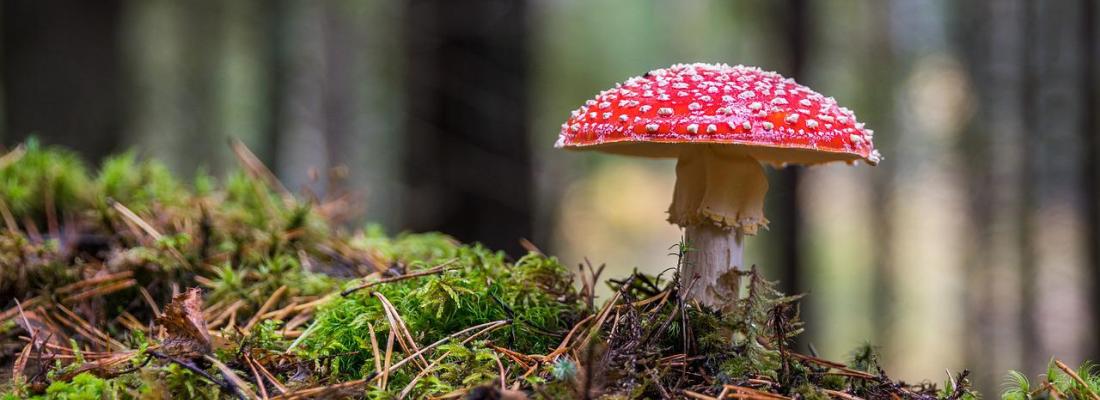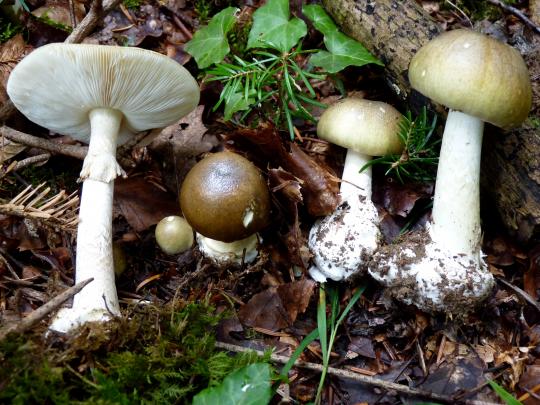Biodiversity Reading time 2 min
What is the origin of the deadly toxins in mushrooms?
Published on 16 May 2022

The death cap, funeral bell, and deadly dapperling are three very different forest mushrooms – all three as toxic as they are beautiful.
Although they are very different species, they all produce the same deadly toxin: amanitin, a compound thought to have appeared in a fungus present in forest soils alongside the ancestors of these three species. It is thought to have passed on the genes needed to make amanitin to its neighbours, not by sexual transmission but by direct transfer of genetic material through the so-called horizontal gene transfer (HGT) mechanism.

INRAE scientists, together with the Kunming Institute of Botany in Yunnan, China, compared the genomes of 15 amanitin-producing fungi. Their goal? Identify the genetic factors and genes responsible for the production of this lethal toxin.
The four identified genes are identical and present in a single copy in deadly Amanita, Lepiota and Galerina species. Deadly Amanita, however, such as the death cap, have all four genes – but in dozens of copies each! More copies mean more toxin produced, resulting in a high accumulation of it.
Why do these fungi produce this toxin – sometimes in astronomical quantities? The phenomenon is thought to be a defence mechanism to discourage the consumption of forest mushrooms by predators such as rodents, slugs and insects.
Between 2010 and 2017, poison control centres recorded around 1,000 cases of poisoning per year due to the ingestion of toxic mushrooms, making it a matter of public health to learn more about toxin production. It now remains to uncover the famous ancestor at the origin of amanitin.
Reference
Luo H, Hallen-Adams HE, Lulï, Y, Sgambelluri RM, Li X, Smith M, Yang ZL, Martin FM (2022) Genes and evolutionary fates of the amanitin biosynthesis pathway in poisonous mushrooms. Proc. Natl. Acad. Sci. U.S.A, https://doi.org/10.1073/pnas.2201113119
The photo at the top shows a fly agaric (Amanita muscaria), which does not produce the deadly toxin amanitin but psychedelic compounds of another family.
